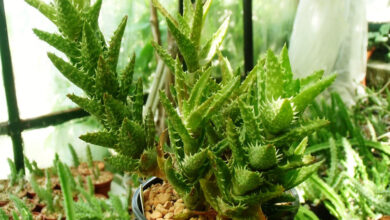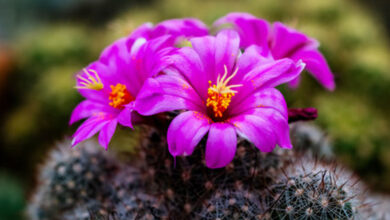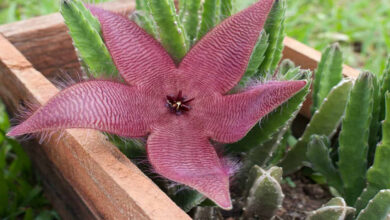Torch cactus propagation and care tips
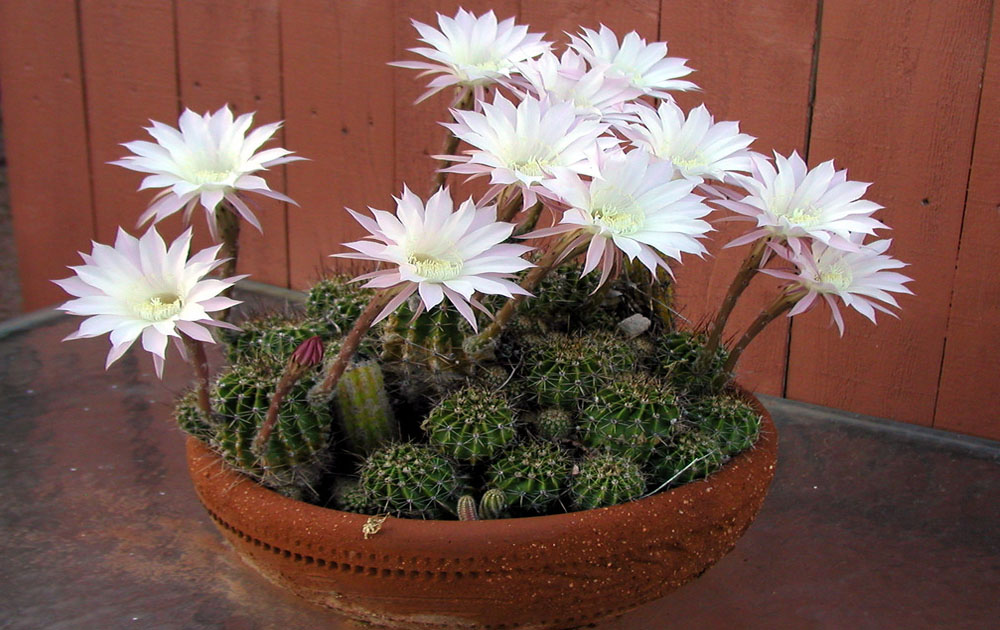
Torch Cactus grows straight, with a wide range of branches sprouting from the plant’s base, all of which grow upright as well. The stems are brilliant green with a yellow undertone, contain 10-15 ribs, and are coated in small, golden spines.
Flowers appear in late spring or early summer, and they may bloom again in the fall. Blossoms have big, white blossoms that are 5 to 8 inches in diameter and have lengthy tubes. Typically, many blooms from the same plant bloom at the same time, adding to the spectacle.

Torch cactus
It was discovered in Bolivia and Argentina, mainly in the Catamarca region, as well as in other parts of South America. They’re currently common in low desert gardens across Phoenix, Arizona.
Alternative botanical names for this cactus include:
- Lobivia Grandiflora
- Lobivia grandiflorus
- Helianthocereus grandiflorus
- Helianthocereus grandiflorus
- Helianthocereus huascha
- Trichocereus rowleyi
- Echinopsis huascha
- Echinopsis spachiana
- Torch cactus is the most frequent name for this species.
Note: Some of the most well-known varieties are the golden torch and silver torch cactus.
Torch cactus propagation
Torch cactus may be grown from seeds or cuttings.
- If you’re replicating by cuttings, cut a 20-30 length piece from the plant’s top.
- Expose the cutting end to direct sunshine to dry it (also known as callousing).
- Cover the remaining length to prevent sunburn.
- Leave the cutting in this position for 1-2 days in a brightly lit area of your home.
- You can keep your cuttings for a while, although surface mould will most likely emerge after a while.
- Pick a well-drained potting mix (NOT houseplant soil) – a combination of dry soil, perlite, and sand is an excellent option.
- Plant the cutting 3 to 5 inches deep in the soil.
- Water properly but avoid overwatering.
Note: It will take a couple of months for roots to grow before the container can be placed into direct sunshine.
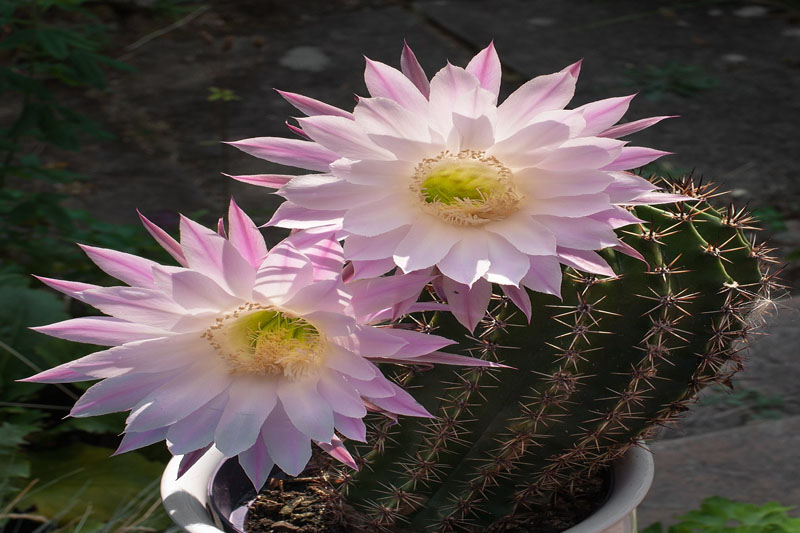
Torch Cactus Care Tips
- Because it does not grow quickly or spread far, the Peruvian flame cactus does not require much pruning.
- Pruning is only necessary for elongated stems that have begun to slough off and are dragging on the ground.
Feeding and watering
Torch cactus ought to be watered deeply, with enough space in between to enable the soil to dry somewhat. During the planting season, spring and summer, make sure to water the plant often.
Water at the plant’s base and avoid getting water on the plant column.
Plant illnesses like root rot can be caused by getting water on the column or making the roots and soil overly wet. Keep your agave torch cactus in a well-drained container if you’re growing it in one.
The cactus can go for lengthy periods of time (up to 4 weeks) without water throughout the fall and winter seasons.
Before adding fertilizer, make sure the soil is moist. You should fertilize your cactus twice a year, once in the spring and once in the summer.
All-purpose liquid fertilizer will suffice but dilute it first to half strength. When growth is slow in the fall and winter, there is no need to fertilize.
Size and Growth
Trichocereus grandiflorus stems can grow in clusters and reach a height of roughly 2′ feet at full maturity, making it a columnar cactus. Radial spines are around 1.5″ long, and a mature plant has about 12-18 ribs.
Temperature and light
From early spring through late October, the torch cactus requires plenty of bright sunlight. Turning the plant around ensures that all sections of the cactus receive equal light exposure.
Indirect sunlight with partial shade is ideal because the plant will not thrive in full sun, thus a location under a mesquite or palo verde tree would be ideal.
They need around 4-5 hours of light every day to blossom. To protect a fresh plant from the sun, use another substance.
In the winter, relocate it to a more shady location with less sunshine, where it will lay dormant and rest until the next bloom season.
It is an extremely resistant plant that can withstand harsh frost & freezing temperatures as low as 14° F (-10° C).
It enjoys a tropical to the temperate environment and may be cultivated inside under these conditions.
Flowering Trichocereus Grandiflorus Hybrid
Torch cactus contains red blooms that may vary in shade due to a large number of hybrid varieties of this plant, many of which match the saguaro flower.
Some variations have white blooms that range in size from 6″ to 10″ inches. The cactus tube is extremely hairy, with light brown areoles. At breaking light, the flowers bloom.
Torch Cactus Issues
- If you overwater your cactus, it may get root rot.
- Pests such as succulent mealybug pests & red spider mites may also harm it.
- Apply an insecticide to recover your cactus in case of any problems.
Note: If you are planning to expand your home garden you may benefit from Propagating Christmas Cactus in Water along with some beautiful easiest houseplants.

